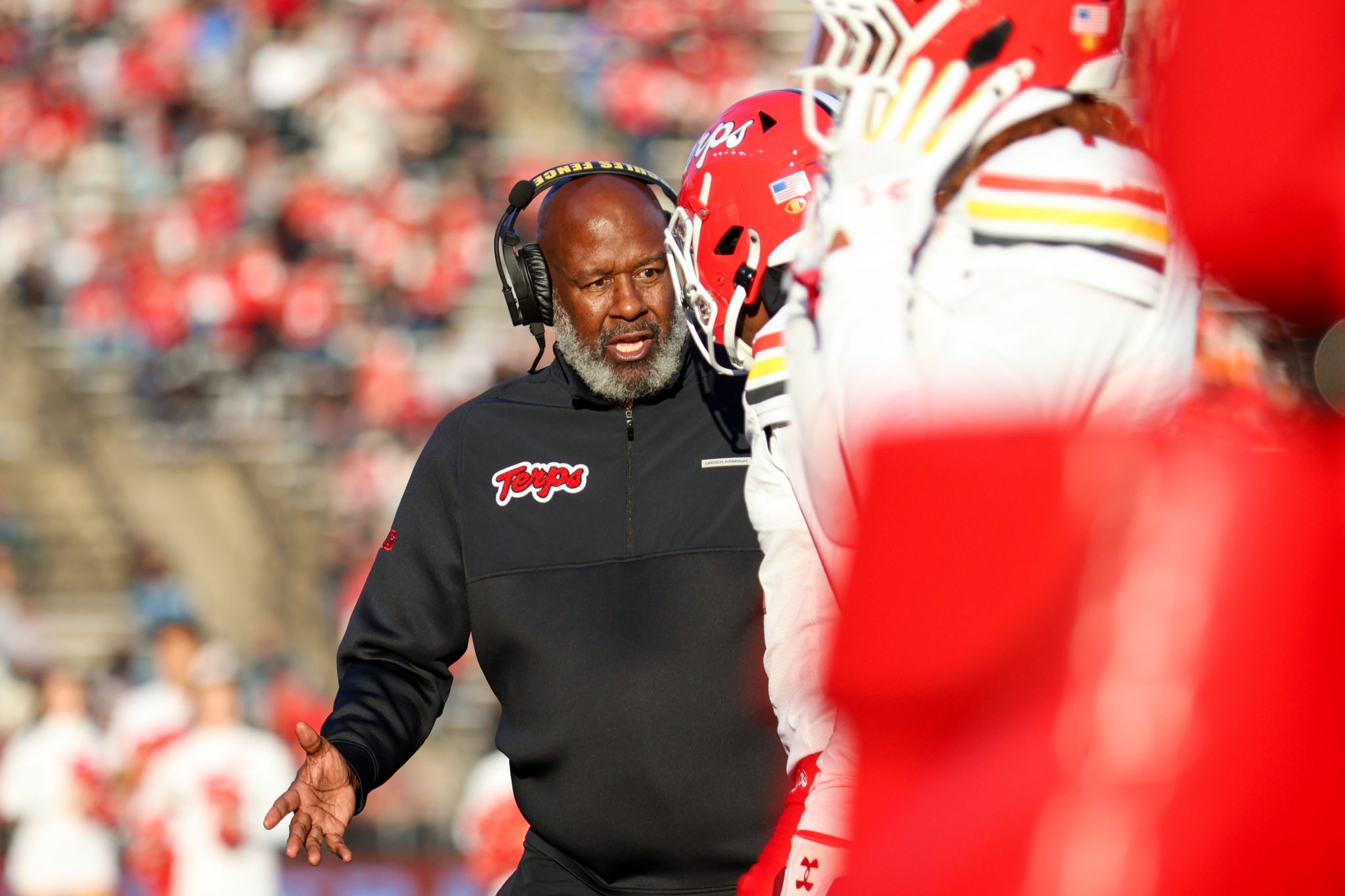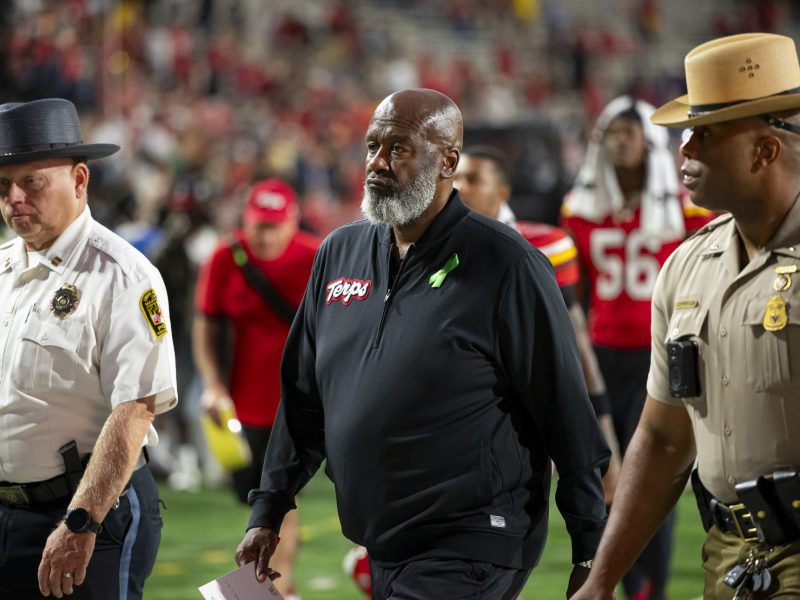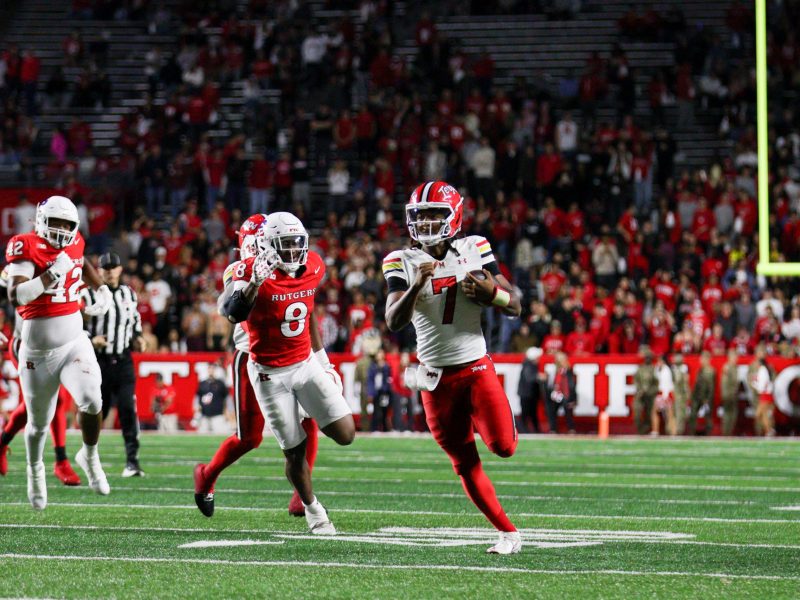PISCATAWAY, N.J. — Since the start of the 2020 season, Rutgers and Maryland football entered Saturday boasting the fewest and second fewest wins in the Big Ten, respectively, excluding the four teams that joined the conference last season.
Saturday marked a prime opportunity for the Terps to snap a four-game skid and record their first win in November since 2023 — which came against the Scarlet Knights.
Instead, they faltered. Maryland lost to Rutgers, 35-20, at SHI Stadium, despite a season-high 305 rushing yards. Quarterback Malik Washington led with 164 yards on the ground, surpassing his total of 99 entering the game.
“This inexperienced team created an expectation with how they played early, [they’re a] little banged up right now and they keep showing up for me,” coach Michael Locksley said. “It’s my job to remain positive — I have no problem with the expectation that we’ve created.”
During the week, Locksley said a victory over the Scarlet Knights would signify progress for the Terps since it makes five wins — one more than last season. While a low number, he said it would demonstrate “slow progress.”
But Maryland boasts just two Big Ten wins over the past two seasons and is now guaranteed to finish below .500 in conference play. The Terps have done that in all seven seasons under Locksley since 2019.
“I’m not going to evaluate us right now,” Locksley said. “Meet me at the end of the season, I’ll have an end-of-season review for you.”
Maryland’s defense allowed quarterback Athan Kaliakmanis to throw for 229 yards and four touchdowns. Running back Antwan Raynond added a career-high 240 rushing yards and receivers were often wide open down the field. Cornerback Jamare Glasker surrendered three touchdowns, with Locksley yelling at the redshirt junior on the bench after one.
[Here are 3 takeaways after Maryland football’s lifeless loss to Indiana]
Rutgers made it a two-score game with just under five minutes when Raymond dashed for a five-yard touchdown. The Scarlet Knights converted a pair of third-downs on the drive.
The Terps, who entered sixth in the Big Ten with 23 sacks, notched just one, while Rutgers failed to sack Washington. The freshman missed some key throws, including a wide open DeJuan Williams out of the backfield on fourth down in opposing territory in the third quarter.
Still, Washington bounced back from his first multi-interception outing against Indiana, where he rushed for one yard on three carries. He has repeatedly said he wants to use his legs more and finished with two total touchdowns against the Scarlet Knights.
“[The run game is] something that we talked about earlier in the season, being able to improve on,” Washington said. “Adding myself into that just helps the offense even more.”
That included a 73-yard read-option on the game’s second play, the longest rush by a Terps quarterback since 2015.
Maryland’s previous longest run this season was 28 yards. It also entered last in the Big Ten in rushing yards, rushing yards per game and rushing attempts. No running back recorded a run of more than four yards against the Hoosiers.
[Meet Chuck Douglas, Maryland athletics’ most online fan]
But the backs joined Washington in a season-best performance Saturday.
Williams averaged 4.6 yards per carry on 14 carries. Redshirt sophomore Nolan Ray, who had 13 rushing yards over the past two games, ended with 77 on five carries against Rutgers, which came in allowing the second most rushing yards per game in the Big Ten.
“I thought Malik’s ability in the run game … opened up the natural run game, where our backs started being able to get some positive yardage,” Locksley said. “It was good to see Malik make that point of emphasis go for us.”
Ray notched a season-high 55-yard run in the second quarter to set up a Washington touchdown pass to receiver Kaleb Webb. The Terps were outscored 21-3 the rest of the way, though.
Maryland is now even with Rutgers at the bottom of the Big Ten with 15 conference wins since the start of the 2020 season.
Locksley referenced in the week how the college football landscape is drastically different than when he took over the Terps. He’s repeated how Maryland is no longer a developmental program amid a growing NIL impact, the transfer portal and conference expansions.
Considering his results the past two years, it feels fair to question what type of program Maryland is.



